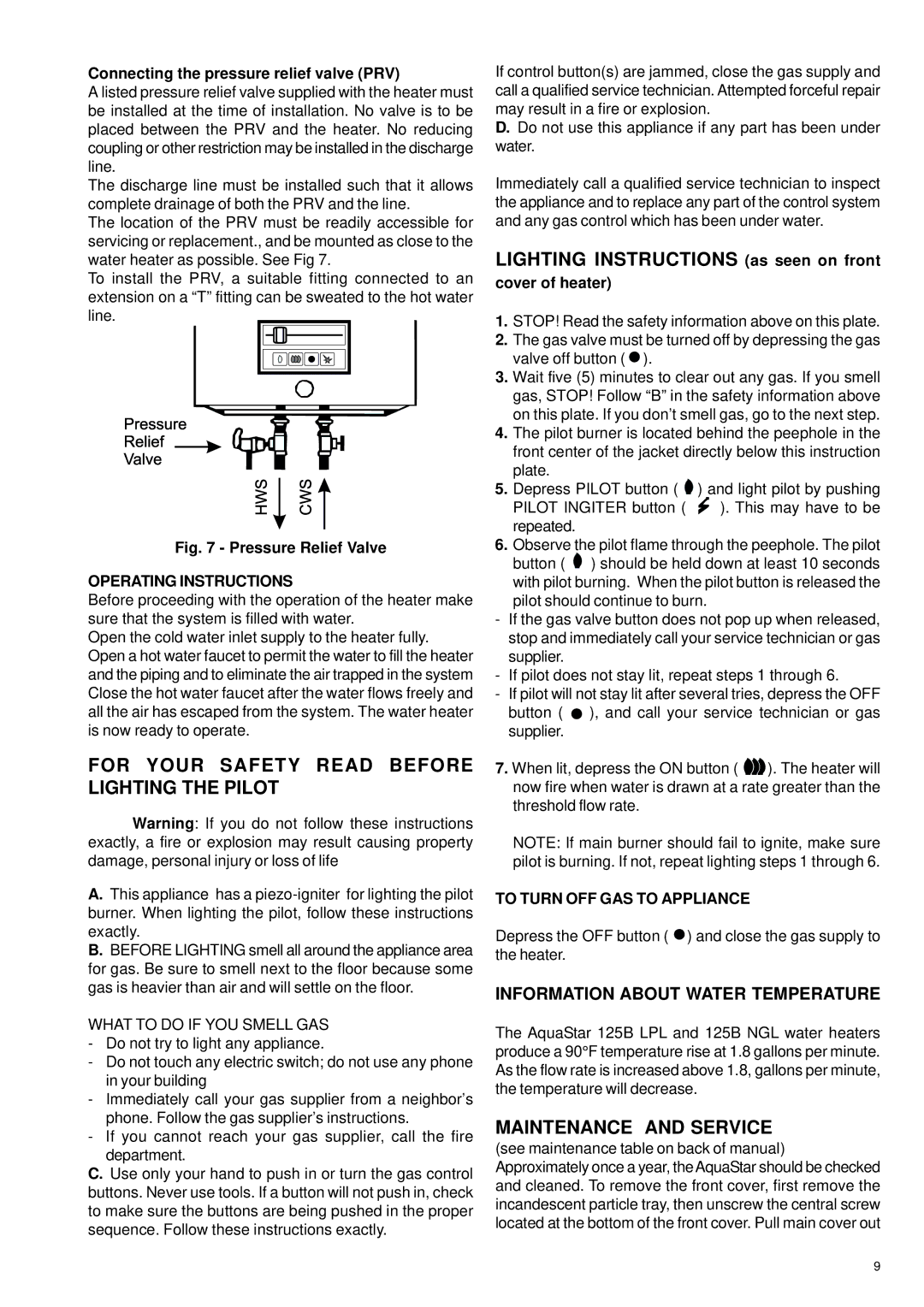125B NGL, 125B LPL specifications
Bosch Appliances has established itself as a leader in home innovation, offering cutting-edge products designed to enhance everyday living. Among their notable offerings are the Bosch 125B LPL and 125B NGL models, both engineered to meet the needs of modern households.The Bosch 125B LPL features a sleek design, making it a stylish addition to any kitchen. It operates with a low noise level, allowing for an unobtrusive cooking experience. One of its standout features is the powerful performance it delivers, thanks to its innovative cooking technologies. The induction cooking system ensures rapid heating and precise temperature control, allowing users to cook their meals to perfection. The residual heat indicator is another excellent feature, ensuring safety by alerting users to hot surfaces.
On the other hand, the Bosch 125B NGL focuses on providing versatility and convenience in the kitchen. This model is equipped with advanced gas cooking technology that offers instant heat and adjustable flame control. This ensures that home chefs can simmer, sear, and sauté with precision. The integrated safety features, including a flame failure device, provide peace of mind while cooking.
Both models embody Bosch’s commitment to energy efficiency. They are designed to minimize energy consumption while maximizing performance, which is a significant advantage for environmentally conscious consumers. Additionally, the interface on both appliances is user-friendly, featuring intuitive controls that make it easy to navigate settings and cooking modes.
Bosch has also incorporated smart technology into these models, allowing users to connect their appliances with home networks for added convenience. This can include features such as remote monitoring and control, enabling homeowners to manage their cooking seamlessly.
In terms of durability, both the 125B LPL and the 125B NGL are built with high-quality materials that ensure longevity and reliability. Bosch’s reputation for fine craftsmanship is evident in every aspect, from their robust construction to the aesthetic details.
In conclusion, the Bosch Appliances 125B LPL and 125B NGL models represent the pinnacle of modern kitchen technology. With their powerful performance, energy efficiency, and user-centric features, they are perfect for those who appreciate gourmet cooking as well as everyday meal preparation. Bosch continues to redefine the culinary experience, making cooking not just a task, but an enjoyable journey.

